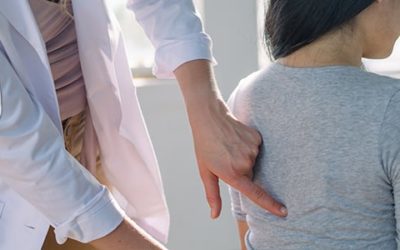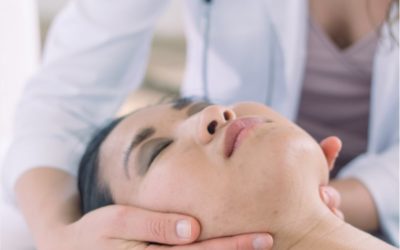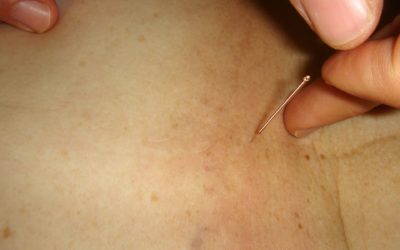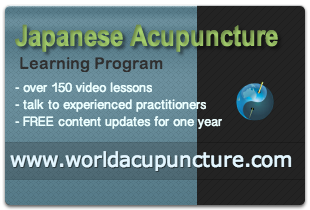If you believe that quality is a vital aspect of life as is your health and wellness, please read this article.
The situation regarding Medical practitioners, Physiotherapists, Massage practitioners, in fact all shapes and kinds of health practitioners and the practice of Acupuncture in Australia is ambiguous to say the least.
The use of dry needling amongst a variety of modalities, especially physiotherapy in recent years is perceived by many folk as the practice of Acupuncture.
Dry needling, as wise practitioners of the above modalities will tell you, is not Acupuncture.
Medical Acupuncture and the many simplified versions of needling used by many practitioners of Allied Modalities DO NOT apply the 3,000 years of clinical wisdom encapsulated within the practice of Traditional Acupuncture.
The vast difference between the therapeutic application of acupuncture needles in Dry Needling, Medical Acupuncture, Traditional Chinese Acupuncture and the more refined Traditional Japanese Acupuncture is exemplified by the use of thick gauge needles in the former versus the use of extremely thin gauge needles in Traditional Japanese Acupuncture.
A very mechanical manipulation of thick gauge needles versus the subtle energetic application of very fine needles are the polar opposites from which these modalities operate using similar instruments.
Practitioners of the point-based TCM Acupuncture with its dependence upon thicker gauge needles and mechanical stimulation might have a much tougher time convincing other modalities and the consumer that there are major discrepancies in the therapeutic application of Medical Acupuncture, dry needling and Traditional Chinese Acupuncture.
My profession’s inability or unwillingness to stand up and be counted in the public eye as a beneficial and legitimate healing modality has left the door wide open for every man and his dog to lay claim to the practice of Acupuncture merely because they have a needle in hand, and if you’re lucky, have completed a couple of weekend courses.
In Australia the general public has precious little knowledge regarding the clinical efficacy and flexibility of Traditional Acupuncture, believing that Acupuncture might be effective in some cases for the relief of musculoskeletal pain, headaches or perhaps a less invasive way of inducing childbirth.
The full potential of Traditional Acupuncture is not recognized within our own profession let alone by practitioners of Allied modalities and the general public.
As a practitioner of 25 years standing I believe that Traditional Japanese Acupuncture is at the forefront of discovering the vital secrets of the ancient acupuncture classics and implementing the myriad of subtle practical skills that contribute to the potency of your treatment.
A physiotherapist, medical practitioner, massage therapist etc, will translate diagnostic information in a very different manner to a practitioner of Traditional Japanese Acupuncture; the diagnostic conclusions they come to and all therapeutic action that they might take will be significantly different to that of a practitioner of Traditional Japanese Acupuncture.
Even a practitioner of Traditional Chinese Acupuncture will translate diagnostic information differently and treat very differently to a practitioner of Traditional Japanese Acupuncture!
A practitioner of Traditional Japanese Acupuncture will always interpret your diagnostic information based on an intimate knowledge of meridian pathways and the intricate energetic interactions between each of these pathways, their associated organ and the interdependence between each of these meridian/organ complexes.
Your inherited constitution or genetic health tendencies and unique presentation of symptoms are interpreted on an individual basis.
This is a very different clinical picture to the one that a practitioner of another modality might have.
The diagnostic and needling skills required in delivering a therapeutically potent Traditional Acupuncture treatment take years of practice to refine and develop, it is not possible for this to be achieved without much study and committed practice, only a dedicated few choose to walk down this road less travelled.
Fewer still actually tackle the mountains, for that takes great effort.
Virtually no one reaches the end of the road.
It is up to senior practitioners such as myself to demonstrate and assist our valued patients, colleagues in Allied modalities and fellow Acupuncturists to understand more about the clinical efficacy of meridian based Traditional Japanese Acupuncture.
I strive to do this through the websites http://www.worldacupuncture.com and http://www.worldacupunctureblog.com, my in-clinic mentoring program, regular monthly workshops for students/colleagues and most importantly by delivering the best possible treatment I am capable of.
A vast philosophical and therapeutic chasm exists between physiotherapy and Traditional Japanese Acupuncture, a chasm that is bridged in some way by our mutual reliance upon tactile sensitivity.
The diagnostic and therapeutic approaches used in Traditional Japanese Acupuncture and dry needling are very, very different.
‘One is exclusively musculoskeletal in approach and mechanical in execution, the other, combines both musculoskeletal and energetic perceptions and is primarily energetic in its execution.’
Both can achieve beneficial clinical outcomes, however, Traditional Acupuncture, especially Traditional Japanese Acupuncture has far more diverse therapeutic and diagnostic applications than purely muscular skeletal.
Here are some links to a number of articles and videos that may be of interest and relevance to you.
http://www.worldacupunctureblog.com/category/specialities/chronic-fatigue-syndrome
http://www.worldacupunctureblog.com/category/specialities/infant-acupuncture
http://www.worldacupunctureblog.com/category/specialities/infection-and-congestion
http://www.worldacupunctureblog.com/category/specialities/musculoskeletal-disorders
http://www.worldacupunctureblog.com/category/specialities/musculoskeletal-disorders/lower-back-pain
http://www.worldacupunctureblog.com/category/specialities/pmt
http://www.worldacupunctureblog.com/category/specialities/post-surgery
http://www.worldacupunctureblog.com/category/specialities/pre-and-post-natal
http://www.worldacupunctureblog.com/category/specialities/pregnancy
http://www.worldacupunctureblog.com/category/specialities/preventative-treatment
http://www.worldacupunctureblog.com/category/specialities/sleep
http://www.worldacupunctureblog.com/category/specialities/sports-performance-enhancement
http://www.worldacupunctureblog.com/category/specialities/stress-and-anxiety
Last month, I had the pleasure of conducting a one hour practically based presentation where I did my best to demonstrate the clinical efficacy and diverse therapeutic skills of Traditional Japanese Acupuncture to my physiotherapy colleagues
Three courageous physiotherapists volunteered for treatment, none suffering from any specific problem, all highly stressed!
Watched by several intrigued colleagues, each of my three volunteers was treated differently as demanded by their individuality and I did my best to explain the difference between the treatments.
All survived all and reported feeling much more relaxed and significantly energized.
For over 20 years my ever evolving version of Traditional Acupuncture has been my sole form of treatment in clinic.
This has absolutely nothing to do with my opinion on the efficacy of other allied healing modalities such as herbal medicine, chiropractic, osteopathy, physiotherapy, vitamin and mineral supplementation, massage, homeopathy etc, etc.
This singularity of clinical approach has much to do with an innate affinity with the underlying philosophy and tactile inclination of Traditional Japanese Acupuncture.
The depth of clinical expertise and knowledge available to me as a practitioner of this extraordinary healing art/science is virtually inexhaustible; I doubt there will ever come a time where I will feel I have completed my studies or fully evolved as a practitioner.
I believe that applying this approach to the practice of Acupuncture is absolutely vital in providing optimum treatment and the best possible results for YOU, the most important ingredient of the clinical equation!
Traditional Japanese Acupuncture is my passion, using that passion to benefit my patients is my purpose!




